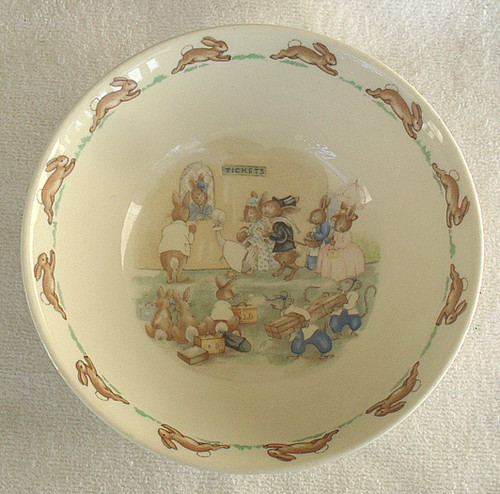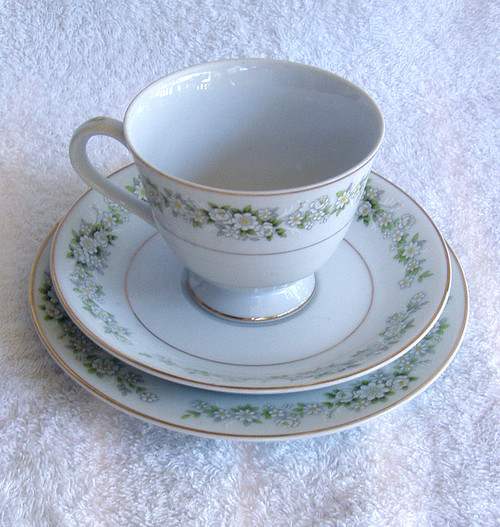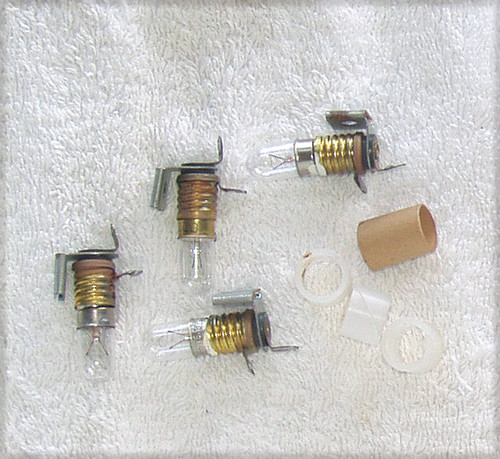HISTORY:
I was "attracted' to these binoculars way back in the dim days of my youth, initially because of the "skeleton" appearance although I am not very familiar with the world of visual optics but I do love mechanical things (old French and English pendulum clocks especially) and the construction of these binoculars stood out (to me) as being interesting to look closer at ... so I bought them around 50 years ago without knowing much about them.
My asking price about recovers what I originally spent, although that was big money 50 years ago!
Life takes one in all sorts of directions and these little binoculars have just been sitting in my "hobby room" in a paper bag for me to "look at" one day ... that day never seemed to come so now these binoculars are looking for a new (and probably more appreciative) home to live in!
It may be possible that the body is missing but (and it's a big but) ... if there was supposed to be a body, why does the rear section move 90 degrees in relation to the front face (see more about this below), a body would prevent that from happening. The designer/manufacturer went to a lot of trouble to ensure these sort of "fold" and fitting a body or case over the internals would mess everything up.
They look and feel something like "theatre glasses" but do not look like the modern versions that I see around online.
In fact I cannot find any photographs online of this type of binocular, from LIMER or anybody else!
I did find this very excellent website created by a person who does indeed seem to be obsessed with all things in the binocular world! I spent hours looking through his creation and although very interesting (lots of facts and figures, not just pictures) I am no more enlightened about these binoculars than before I visited the website.
The website is located at www.miniaturebinoculars.com
The website is a bit 'clunky' and random at times but it is well worth getting to know the website if binoculars are your thing ...
Back to these strange binoculars ...
Identification is sparse, in fact the only marking I could find (and I looked very closely at all the parts) is the front name tag LIMER. I spent ages looking over these binoculars with a good old magnifying glass and an electronic inspection camera, zilch - nada zero on the markings.
From hunting around online I have come to the conclusion that LIMER is a trading name only and the manufacturer of these binoculars was either one or many who put this together.
So let's get down to business and I will do my best describe these small binoculars in detail - if I have used incorrect terms, at least I have given it my best shot and hopefully you can work out what I am trying to say ...
LIMER - Small Binoculars
Probably made in Japan (not 100% on this)
Circa early 1960's ~ 1970's (apparently this is the time period that LIMER was "around")
Magnification: Unknown
Angle of view: Unknown
All metal construction (mixed metal types) with not a sign of plastic anywhere
DIMENSIONS:
95mm wide (110mm including the side tag) x 55mm deep (with the rear lens extended to their maximum distance from the front lens) x 35mm height (front face area)
WEIGHT:
105g (although all metal, pretty lightweight)
DESCRIPTION FROM OBSERVATION:
Front section with the large lens is metal with what appears to be a glossy Black enamel coating, it doesn't look or feel like a paint coating.
The LIMEG name tag at the front is all metal and I can see two heavy wire 'pins' which go from the rear of this name tag, through two holes and are then bent to hold the name tag securely in place. Extremely small working area here, it would be very difficult to get that name tag off the front face.
Notice that there are TWO "cutouts" in the front face, these must be finger grips (actually I used my thumb and first finger) so you can actually hold these binoculars while viewing. This supports the thought that these might be "theatre binoculars" I did try and sit these on my nose! Stupid really, there is no way they are supposed to be used in that manner, the mechanical rear section gets in the way.
The large 26mm diameter stationery lens is fitted inside a Brass tubular frame
To one side of the front face is something that appears to be like a T shaped metal bracket, perhaps for a strap or hand support (as used in theatre binoculars) - I really have no idea what (if anything) is supposed to attach to the tag.
I mentioned a spring behind the front face - a spring? Why would that be needed ... Well it's like this ... the back section of these binoculars can be moved upwards from the horizontal through 90 degrees. The spring ensures that once the force is removed that was used to change the position, the rear section goes back to the original position. This movement is one way only, you cannot move the rear through 90 degrees in the opposite direction.
I have absolutely no idea why this 'folding' function exists - it couldn't be storage because that spring ensures the binoculars cannot remain "folded" and for viewing, pretty useless because the two lens would no longer be in line so you wouldn't see anything! Actually I checked by viewing a distance object and then moving the rear section, all that happens is that the image becomes blurry and distorted initially and finally no image can be seen at all.
I love the design and engineering of the rear section. The two rear lens move along guide rails and the movement is controlled by a worm gear drive in the centre. The movement is soooo smooth, like silk, and very stable ... it doesn't move once the correct focus is set. This gearing is all metal, a combination of diecast and Brass parts. I wouldn't want to be dismantling this gear system because I cannot see any screws at all! It looks very "precision made" but how did 'they' assemble it? Actually I correct what I have stated above regarding no screws ...
I do see two special slots at the rear of the "back' small lens, very similar to the type of screw that can be found in collet knobs. It does appear that both of the rear lens could be removed if you had the correct tool (the working space is very small). I cannot see any way of removing the front lens though, I didn't want to risk damaging the front lens supports - perhaps they unscrew? No idea on this.
The two rear lens are much smaller than those at the front and by using the focus wheel, you can move the rear lens across a separation distance from the front lens of 13mm ~ 22mm - rotating the focus wheel through 540 degrees (1.5 full turns of the wheel) achieves full lens travel from minimum to maximum distance from the front lens.
My overall impression is of a precision designed optical system, particularly the mechanics of it all - If I didn't see suggestions online that these were most likely of Japanese origin, I would have jumped to the conclusion these were of German or Austrian origin - these binoculars just have that quality look, build and feel about them.
TESTING:
The lens are glass but what type (coated etc), I have no idea
Lens look to be very clean and unscratched - visual inspection and "looking through the lens"
I am not an "optical person" so the term I am going to use to describe the large Chrome wheel between the two lens as a "focus wheel"
Minimum distance from the object being viewed is around 2 metres, any closer than this and I cannot get a sharp focus no matter where the centre focus wheel is positioned.
The binoculars come into their own when much greater distances are involved, I can achieve sharp clear enlarged images of objects some 500 metres away. I can see NO marks or scratches on the images while viewing and the 'clarity' of the image is startling (in my layman's opinion)
Very smooth and stable (once the focus changed to the desired setting, there is no "whiplash" once the finger is taken off the focus wheel
Construction observations: overall I am IMPRESSED (and I do not impress easily!) Every little component seems to have been made with precision, no screws observed (I really don't know how all these parts hold together as this is certainly not a 'one piece' construction. The diecast parts are well shaped and smooth - again, made with precision. The central worm drive (open type) seems to have a light grease to help with lubrication - it has not gone sticky or clunky, I have left it well alone.
Now that I have drooled over these little binoculars, taken some photographs and described them as best I can, I have carefully packed these binoculars in bubblewrap, placed onto a firm, thick cardboard base and then placed everything into a completely sealed clear plastic packet - all of this to maintain the present condition and to ensure safe travel to a new owner.
Here's looking at ya!


















